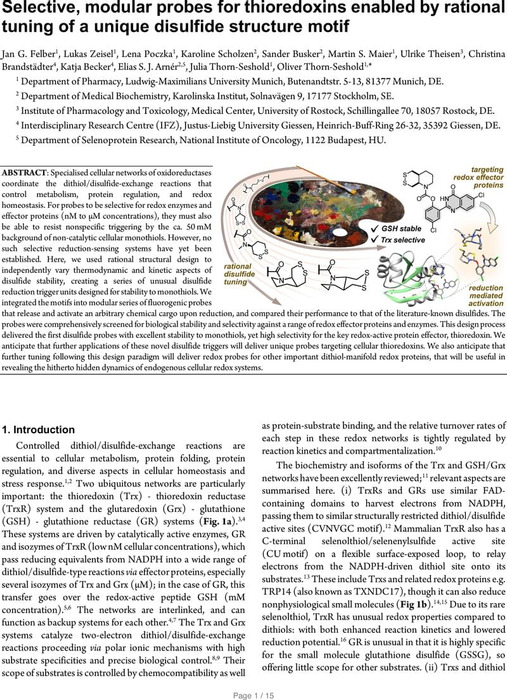Abstract
Specialised cellular networks of oxidoreductases coordinate the dithiol/disulfide-exchange reactions that control metabolism, protein regulation, and redox homeostasis. For probes to be selective for redox enzymes and effector proteins (nM to µM concentrations), they must also be able to resist nonspecific triggering by the ca. 50 mM background of non-catalytic cellular monothiols. However, no such selective reduction-sensing systems have yet been established. Here, we used rational structural design to independently vary thermodynamic and kinetic aspects of disulfide stability, creating a series of unusual disulfide reduction trigger units designed for stability to monothiols. We integrated the motifs into modular series of fluorogenic probes that release and activate an arbitrary chemical cargo upon reduction, and compared their performance to that of the literature-known disulfides. The probes were comprehensively screened for biological stability and selectivity against a range of redox effector proteins and enzymes. This design process delivered the first disulfide probes with excellent stability to monothiols, yet high selectivity for the key redox-active protein effector, thioredoxin. We anticipate that further applications of these novel disulfide triggers will deliver unique probes targeting cellular thioredoxins. We also anticipate that further tuning following this design paradigm will deliver redox probes for other important dithiol-manifold redox proteins, that will be useful in revealing the hitherto hidden dynamics of endogenous cellular redox systems.
Content

Supplementary materials



![Author ORCID: We display the ORCID iD icon alongside authors names on our website to acknowledge that the ORCiD has been authenticated when entered by the user. To view the users ORCiD record click the icon. [opens in a new tab]](https://chemrxiv.org/engage/assets/public/chemrxiv/images/logos/orcid.png)



